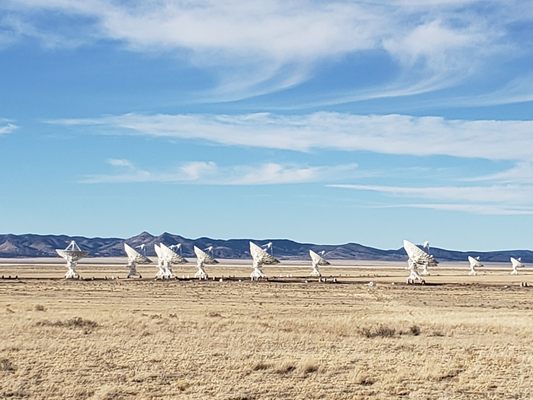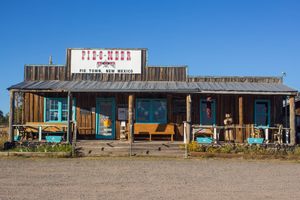About
Western New Mexico is high, dry land, with scrub brush in the brown dirt and hills in the distance. There are no trees and few towns... and then there is the Very Large Array, 27 huge, white radio antennae arranged in a massive Y off US Route 60. Each dish is 230 tons and 82 feet in diameter, and by electronically combining all the data from the 27 dishes, astronomers can simulate the sensitivity of a dish with a diameter of 422 feet: bigger than any single dish in the world. Since its construction in the late 1970s, research has been conducted here on supernovae, black holes, dark energy and SETI, the Search for Extra-Terrestrial Life.
Each of the giant dishes runs on rails, so that the dishes can be rearranged for different operations. Each leg of the array can range from about a third of a mile to about 13 miles from the center point, depending on the placement of the dishes. Walking through the array is a unique, surreal and humbling experience, especially at dawn or dusk, when the dishes cast mile-long shadows across the plains.
The visitor center is open every day from 8:30 am to dusk for self-guided walking tours. For more information on regularly scheduled guided tours inside the facility, and semi-annual open houses, check the Very Large Array website: http://www.vla.nrao.edu/genpub/tours/.
Related Tags
Know Before You Go
The VLA is located 50 miles west of Socorro on U.S. Highway 60. From U.S. 60, turn South on NM 52, then West on the VLA access road, which is well marked. Signs will point you to the Visitor Center. Cellular, WiFi, and similar signals can cause interference with the VLA's data collection, so visitors are required to place their devices into airplane mode and power them off while visiting.
Community Contributors
Added By
Published
November 4, 2009






















































